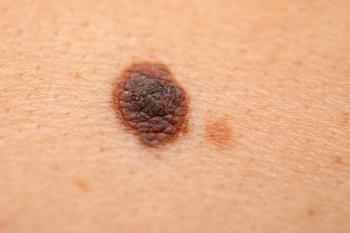
Drug spending rising at slower pace
PBM Express Scripts shares findings from its new Drug Trend Report.
U.S. drug spending rose 5.2% in 2015-roughly half the increase seen in 2014, according to the Express Scripts
In addition, Express Scripts’ clients implementing four or more cost-savings solutions, on average, held their 2015 spending to just 3.3%, nearly two percentage points below the national average, according to Glen Stettin, MD, chief innovation officer for the pharmacy benefit manager (PBM).
Stettin
“While many plans around the country have been shifting more costs to patients via higher deductibles and copayments, Express Scripts’ members’ out-of-pocket expenses per monthly prescription decreased on average,” he says. “In addition, more than 30% of Express Scripts’ members had flat or negative trend.”
The report noted three drivers of drug spend:
• Brand price inflation. The average price of brand-name medications increased 16.2% in 2015, and have nearly doubled (98.2%) since 2011, according to the report. More than one-third of branded medications experienced 2015 price increases of greater than 20% in 2015.
• Specialty drugs. These drugs remain a key contributor to trend, accounting for more than 37% of drug spend in 2015, and forecast to reach 50% by 2018. Spending on specialty medications increased 17.8% in 2015.
• Diabetes drugs. This drug class was the second costliest class overall, and the costliest traditional class, with an overall increase in spending of 14%, driven by increases in use and cost.
A specialty disease class-inflammatory conditions, including rheumatoid arthritis-was the costliest overall drug category for the first time, according to the report.
“Driving specialty spend for inflammatory conditions were greater than 17% increases in unit cost for both Enbrel and Humira, which contributed to the 25% spending increase for the class,” he says.
Specialty spending, led by inflammatory conditions and new discoveries for cancer, is forecast to increase an average of 17% annually over the next three years.
The PBM’s Oncology Care Value Program, launched earlier this year, is applying indication-based reimbursement to align the cost of care with treatment outcomes.
“Right now, we’re focusing on prostate, lung and renal cell cancers,” Stettin says. “We’re also working with our clients to tap into the potential $39.7 billion in savings from biosimilars over the next five years.”
Additionally, Stettin says, biosimilars for two of the top three drugs in the class-Remicade and Humira-may reach the U.S. market in 2017.
“Maximizing the biosimilar opportunity will be key for payers wishing to lower drug spend here,” he says. “The multiple approved indications these drugs have provide opportunities for payers to consider indication-based reimbursement in this class.”
Based on this report, one of the things Stettin advises executives to do is to tightly manage benefits controls spending.
Total drug spending is forecast to increase between 6% and 8% annually between 2016 and 2018, including rebates, according to the report.
Newsletter
Get the latest industry news, event updates, and more from Managed healthcare Executive.





















































